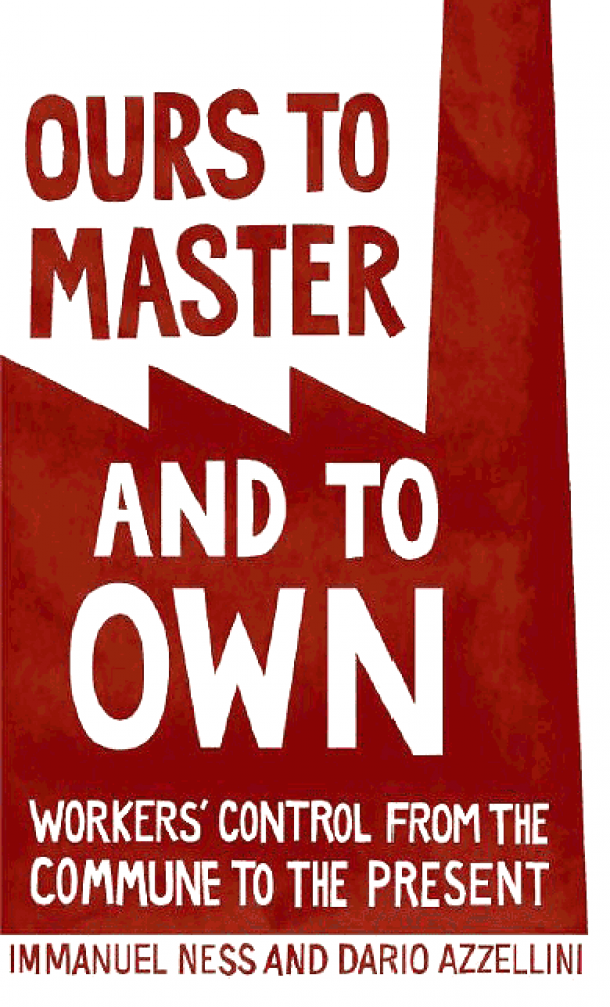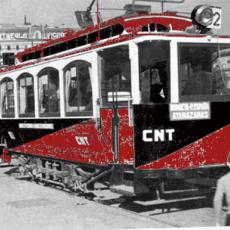Ours to Master and to Own: Workers' Control from the Commune to the Present - Resolute Reader
As I write this review, tens of thousands of people are engaged in Occupy protests and occupations around the world. Most famously in Wall Street, but also on the doorstep of the London Stock Exchange and in a hundred other locations around the globe. Workplace occupations have also been part of the recent struggles - here in the UK, in the last few years at the Visteon and Vestas plants. As this book ably documents, workers control, or at least workers management has been a feature of recent class struggle, as well as in the past. The revolution in Egypt is still developing, so it forms no part of the debates here. Perhaps a new chapter will have to be written soon.
Nevertheless, this collection of essays is extremely timely. Divided into several parts, the editors have collected articles to examine the full range of experiences. Some of the strongest articles are over-views of the historical process from a Marxist point of view. Of these, two in particular stood out. Donny Gluckstein's summary of the experience of Workers' Councils in Europe, based in part on his excellent book The Western Soviets looks at how workplace council's rose as out of revolutionary struggles, beginning with the Paris Commune and then the upheavels following the end of World War One. Similarly, Sheila Cohen's article looks at some of these events and those post World War Two in Europe, together with questions of the role of the State and alternatives to capitalism.
Several articles examine these processes in detail. Three look at the worker's council movement in Europe post World War One, examining Italy, Germany and Russia. The article on Germany is particularly interesting, as it looks at the question of workers organisation under the conditions of illegality, as well as the challenges posed by a young, immature shop-stewards movement faced with an explosion of revolution. It also rescues the fascinating and magnificent role of the workers leader, Richard Muller, who has been largely forgotten to revolutionary history. There are also superb chapters on obscure moments of working class history, Java and Algeria being two. One great strength of this book, is that it doesn't concentrate on the experience of workers in America or Europe, but draws on lessons from every corner of the globe, including near forgotten moments of our history.
These chapters are in my opinion some of the strongest. This is not because they are better written than the others, rather it is because the revolutionary period they cover is inspiring and offers real examples of alternatives to capitalism. The stories of how worker's ideas change at moments of mass revolutionary action is always inspiring and examples of how people take production into their own collective hands, overthrowing the boss and the manager and beginning to run society in their own interest are always useful.
Sadly, later chapters don't match these peaks. This is not simply because the subject matter is obscure. Their is confusion with the definition of workers control. For some authors, it is blurred between the potential for the revolutionary control of the means of production and any example of workers being involved in factory management. This later definition can often come from very top down initiative, such as the experience in Yugoslavia (the rather clunky titled chapter on "Self-Management as State Paradigm").
This is duplicated in later chapters on South America. Here worker's control and self-management have been taken to great heights by the state. Workers are encouraged to take control of their factories, managing them in the interest of the wider economy, yet without the bottom-up experience that marks the high-points of revolution. This is not to say the experience isn't positive. In Brazil, the reaction to bankruptcy of some industries has lead to "Recovered Factories" where despite the problems, it is "impossible to be indifferent after entering a factory like the former Botoes Diamantina... and watching the factory workers handling all different matters themselves, with the CUT flag hanging in the conference room."
However in many cases, the experience of taking over factories in economic crisis has proved difficult, if not impossible. A chapter on Venezuela points out many of the difficulties for such workers co-operatives. How much worker's control is there really when because "the state was the majority stockholder, all important decisions had to be approved by the ministry"? In response, the workers moved on from "comanagement" to workers councils, because, as one worker said, "we didn't kick out one capitalist to create 60 new ones". There is a danger, within capitalism, that isolated examples of workers management lead to a "market of solidarity" between such enterprises, struggling to survive without a further challenge to the status quo.
Despite this, even in the context of capitalism co-operatives challenge the priorities of the system. One characteristic of almost all the examples in the book is that when workers are given some control over their lives, they begin to change. The thrilling story of the Canadian telecom workers who, for five days ran the whole telephone company is a powerful story of how, by kicking out managers, work becomes more interesting, more fulfilling and the service improves. These workers learnt their own power, and because they could engage with others in the workplace, they understood their industry even better, learning about company jobs that they had never heard from before. This is the very beginnings of the old quote from Lenin, about how in the new workers state, "every cook should govern". The Canadian telecoms workers remained until forced out by the existing state and its legal apparatus, though the solidarity they received shows the potential for action even at low points in the class struggle (this was 1981). Their story is particularly of interest, because the strategy of occupation and control was used by a union that was considered weak and couldn't sustain the normal strike procedures.
It would be wrong to review such an important book without engaging in some slight criticism. One criticism I have is that in too few of the articles do we hear how the actual occupations, workers control or self-management worked. The Canadian story is one of the exceptions, but if we are to inspire a new generation of factory occupations and workers councils, we'll have to show how workers' democracy can work (warts and all) and how occupations might proceed. This book has too much of what the people at the top say and do, and too little stories from the ground. A few more quotes and recollections from participants would have helped enormously.
Finally, my main criticism is the old point about reform or revolution. For me, we look at workers councils in the past, to learn lessons about how to transform society in future revolutionary moments. The councils that sprang up from the bottom during the revolutions of 1917-1920, or those in Spain in 1936 or Chile, Portugal and others in the 1970s offer both a potential for a future society and lessons for us today. There is a danger that we see them as historical curiosities. Peter Robinson falls into this trap when he concludes his chapter on Worker's Control in Portugal, writing that it "was an extraordinary period, one that needs to be further studied and celebrated". Here Robinson makes the process sound like an abstract historical argument, rather than, as other chapters show, a living breathing debate that workers' in many parts of the world are engaging in today. As the recession deepens and the capitalists try to make workers globally pay for the crisis, its a discussion that millions more will take part in.




